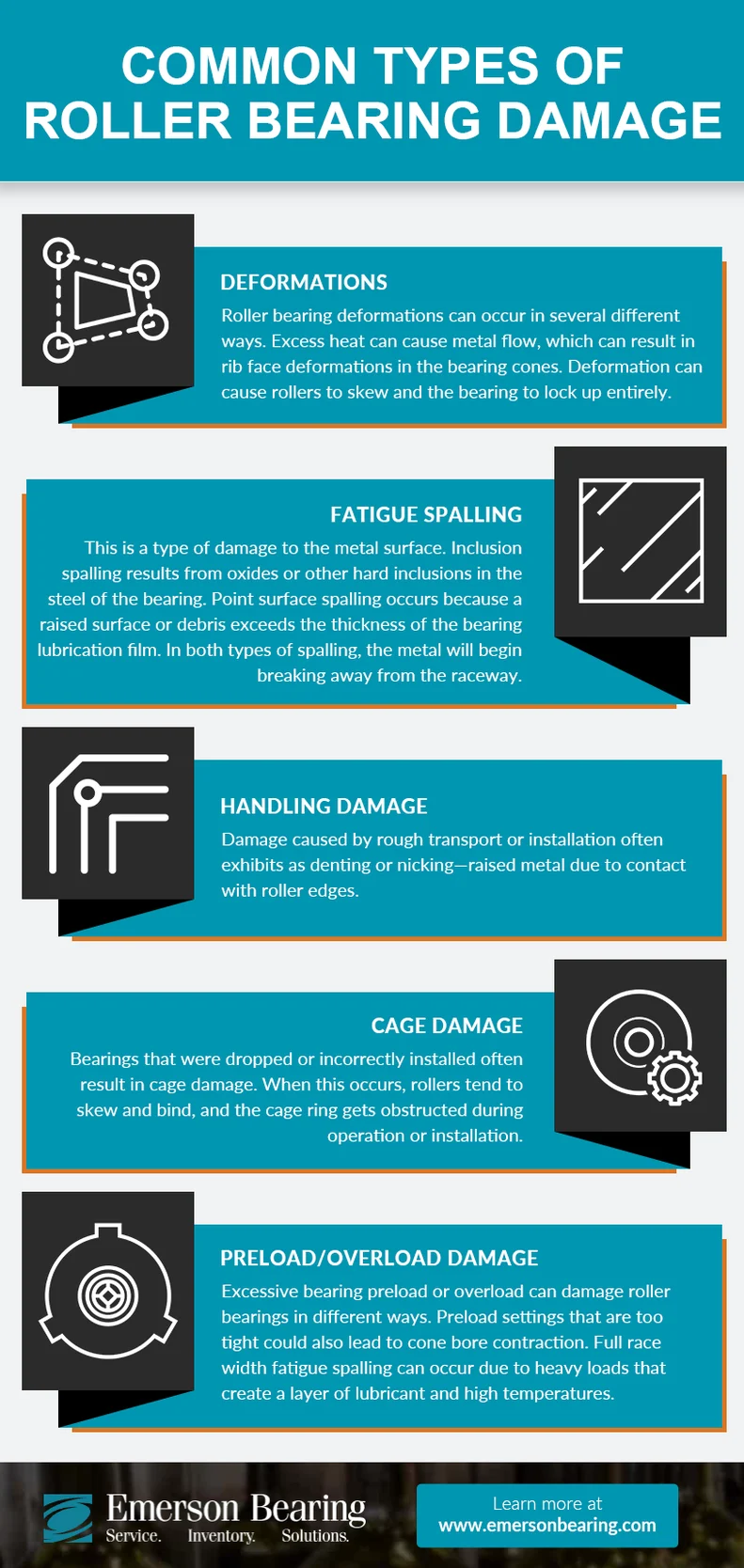How to Tell If Your Roller Bearings Are Worn?
Roller bearings play a crucial role in the smooth operation of most machinery. When these components are damaged, it can lead to serious consequences for the machine or the products it produces. Like ball bearings, roller bearings are designed to support loads and reduce friction. Over time, they may experience wear and tear that necessitates repairs or replacements. In this article, we’ll explore the most common causes and types of roller bearing damage, helping you extend the life of your equipment.

**What Are the Most Common Types of Roller Bearing Damage?**
Every year, around 10 billion bearings are produced globally, with most lasting longer than the equipment they're installed in. A small percentage is replaced early for preventive maintenance, while only 0.5% face severe damage or complete failure. Here are the main causes of roller bearing damage:
- **Deformations**: Excessive heat can cause metal flow, leading to rib face deformations in the bearing cones. This can result in misalignment of the rollers and even total locking of the bearing.
- **Fatigue Spalling**: This occurs when the metal surface begins to break away due to stress. Inclusion spalling results from hard inclusions like oxides in the steel, while point surface spalling happens when debris or raised surfaces exceed the thickness of the lubrication film.
- **Handling Damage**: Rough handling during transport or installation can cause dents or nicks on the bearing surface, often resulting from contact with roller edges.
- **Cage Damage**: Bearings that are dropped or improperly installed can suffer cage damage. This leads to misalignment of the rollers and potential blockage during operation.
- **Preload/Overload Damage**: Too much preload or excessive load can cause various forms of damage. It may lead to contraction of the cone bore or full race width fatigue spalling due to high temperatures and reduced lubrication effectiveness.
**When Should You Replace Your Roller Bearing?**
Determining when to replace a roller bearing can be challenging, as the time between initial damage and failure varies. High-speed bearings can fail within seconds, while low-speed ones may degrade over months. Early detection is key to preventing total failure, which can damage other machine components and lead to costly downtime.
Monitoring for unusual noises, vibrations, or temperature increases can help identify issues before they escalate. Addressing these signs promptly during routine maintenance can save time, money, and prevent further system damage.
**Why Choose Emerson Bearing for Your Roller Bearing Needs?**
With over 50 years of industry experience, Emerson Bearing has built a strong reputation for providing top-quality roller and ball bearings. We offer leading brands such as BOWER, FAG, FERSA, IKO, INA, NACHI, NSK, NTN, RBC, TORRINGTON, URB, and ZNL.
We understand that every customer has unique requirements, and choosing the right bearing for a complex application can be challenging. Our team of experts is here to guide you through the selection process, ensuring you get the best fit for your needs.
At Emerson Bearing, we work closely with our clients to ensure satisfaction with both our products and services. Alongside our sister company, Action Bearing, we serve customers across the globe. If you’re looking for reliable bearing solutions, reach out to us today and let us help you find the perfect match for your application.
Medical Device,Material Surgical Instrument,Surgical Instrument Parts,Medical Surgical Instruments Set
TMT INDUSTRY , https://www.tmtmedtech.com